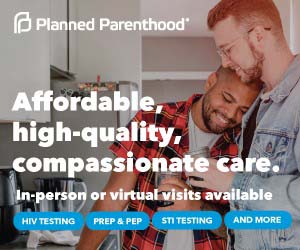When I think about the past 35 years at PGN, the technological upgrades are the most tangible changes that come to mind.
I wrote my first PGN story in 1977 while still a student. (Yes, I was a very advanced elementary-school student!)
PGN operated on a shoestring budget in the 1970s — not that we’re The New York Times today. But it always felt as if you were flying by the seat of your pants. We didn’t even have unlimited long-distance phone service.
I’ll never forget the look on publisher Mark Segal’s face when he saw the $900 phone bill I generated while investigating anti-LGBT insurance discrimination in America.
But Mark was a good sport, and paid the bill without as much as a grumble. He never quibbled about expenses when it meant getting the news in a fair, accurate and comprehensive way.
Still, we all breathed a sigh of relief when PGN finally got unlimited long-distance.
Back then, PGN was at 13th and Locust streets. Because that was the center of the city’s red-light district at the time, there were plenty of sex workers to walk past on your way to the office each morning.
Conversely, there was always lots of police protection.
I remember when I got my first death threat at PGN. I ran out the door and found a police officer right on the corner. He looked at the note and in a kindly manner said, “Son, you don’t have to worry about this. It’s the threats you won’t hear about that could be a problem.”
It wasn’t exactly what I wanted to hear, but it calmed me enough to return to work.
We received national news through a clipping service. Each week, an envelope full of clips would arrive at the office, and we would search for something newsworthy.
It was slim pickings, even for a monthly paper. I can remember wondering if we’d get enough real news to fill the paper.
Now the paper is published weekly, and there are always plenty of potential news stories to sort through.
In the early days, I typed my articles on a manual typewriter, which colleague Victoria Brownworth once called a Mattel toy!
An editor would edit my copy by hand, then the typesetter would input it. The print that came out of the typesetting machine was cut into columns with an X-Acto knife, then laid out on large light tables, secured in place with a wax roller.
We would eagerly await the finished product from the printer, hoping everything came out OK.
Those were the days before the Internet.
We did our fact-checking by telephone or by hoofing it to a nearby library. I often beat a path to the old Free Library Mercantile Branch at 10th and Chestnut streets to do research for a story.
Later, the Inquirer and Daily News permitted us to use their library, which had thousands and thousands of clips on almost every subject imaginable.
Of course, the more things change, the more things stay the same. Even today, telling someone you’re a PGN reporter seeking an interview can still elicit a hostile reaction. But those reactions aren’t as frequent — nor as extreme — as in the 1970s.
The hang-ups, laughter and mocking aren’t as prevalent.
In the early days, I can remember seeing people plunk 50 cents into a PGN box and furtively grab a paper — glancing around to see if anyone was looking.
That might still happen today, but at least the papers are free. And I’ve even seen some folks reading PGN on buses and trains, which is always a sight to behold.
Tim Cwiek finally got an e-mail account in 2007.
